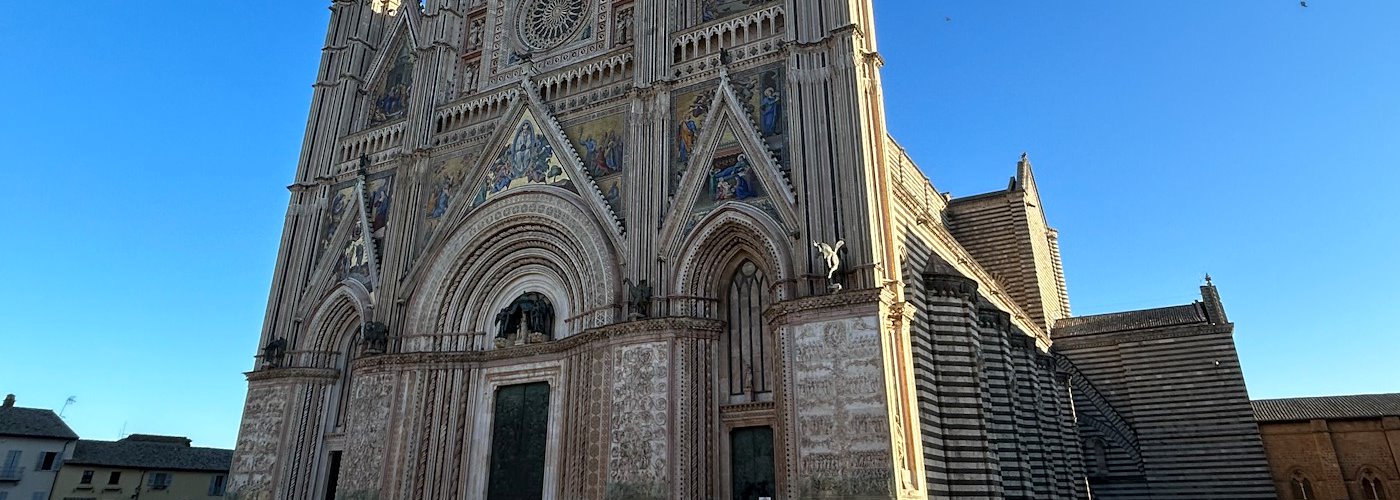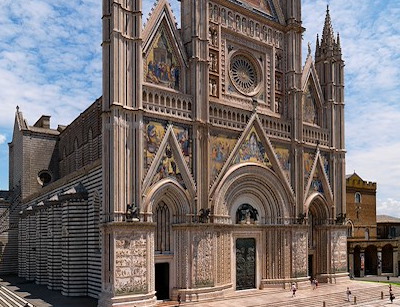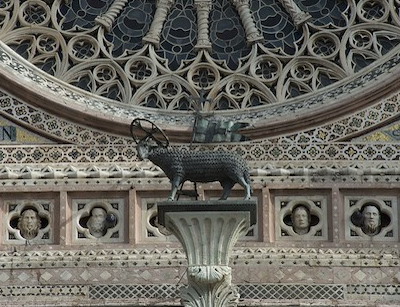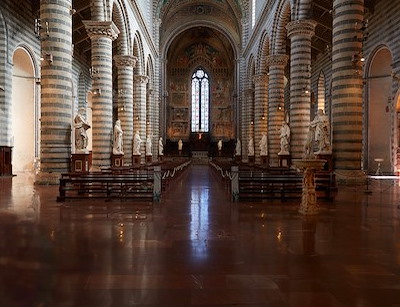
“Orvieto, where Sienese art placed Italy's most beautiful cathedral, that immense and intricate façade, like a sculpted miniature, like a page that cannot be turned; you gaze at it endlessly, and something within you melts, silently, like a communion”.
(Cesare Brandi, Terre d’Italia)
Before the Duomo
At the end of the 13th century, the Cathedral of Santa Maria de Episcopatu – later renamed Santa Maria Prisca (meaning "ancient”) – along with the Church of the Canons and the Church of San Costanzo, made way for a new cathedral. This change was part of a broader urban redevelopment project driven by the frequent presence of the papal court in the city, which required a grand church for papal ceremonies.
The first stone was laid on 13 November 1290 in the presence of Pope Nicholas IV. On 23 August 1291, the pontiff, in granting an indulgence in favour of the new church, recalled the laying of the first stone: primarium lapidem per nos benedictum […] propriis manibus duxerimus collocandum.

 ITA
ITA




